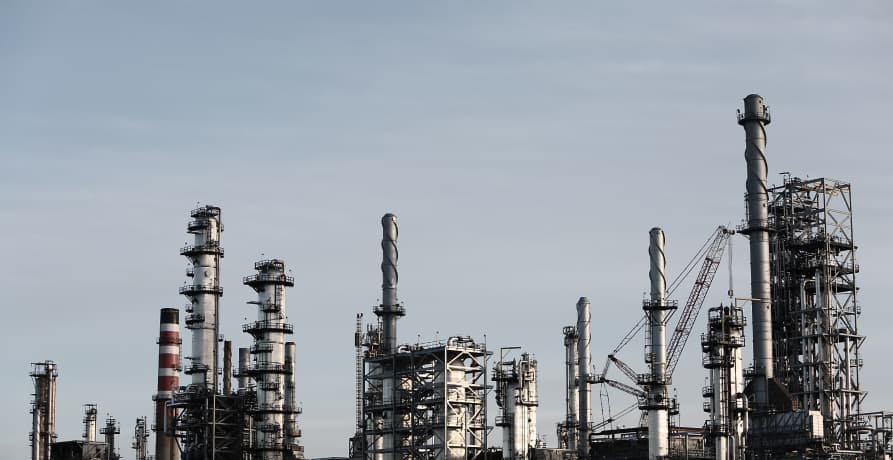
What are the 3 Pillars of Corporate Sustainability?
In this article, we'll explore what the 3 pillars of corporate responsibility are, why they're important, and how businesses can turn them into practical action.
ESG / CSR
Industries



As the world looks for alternatives to fossil fuels, biogas has gained attention as a solution that transforms organic waste into usable energy. It sounds like a win-win – but does it hold up under scrutiny, and how sustainable is it really?
Biogas production relies on anaerobic digestion, a natural process where bacteria break down organic materials like food waste, manure, and sewage to produce a methane-rich gas. This gas can be burned for heat and electricity or refined into biomethane, a fuel that can replace natural gas. Unlike fossil fuels, biogas is considered carbon-neutral because the carbon released during combustion was originally absorbed by plants during photosynthesis. However, its sustainability depends on various factors, including how it’s produced, transported, and used.
So, is biogas a real climate solution, or does it have hidden drawbacks? In this article, we'll explore what biogas is, its environmental impact, and whether it truly lives up to its reputation as a sustainable energy source.
The resulting gas is primarily composed of:
Because of its high methane content, biogas can be burned to generate electricity, heat, or even refined into biomethane, which has the same properties as natural gas.
Biogas is created through anaerobic digestion, a natural process where bacteria break down organic materials in an oxygen-free environment. This occurs in biogas digesters (or anaerobic digesters), which are sealed tanks designed to optimise methane production. The process follows three key steps:
The type of organic material used as feedstock plays a major role in the efficiency and sustainability of biogas production. Common feedstocks include:
| Waste Type | Description |
|---|---|
| Agricultural waste | Crop residues, manure, and plant waste. |
| Food waste | Household and industrial food scraps, supermarket waste, and expired products. |
| Sewage sludge | Biogas is often extracted from wastewater treatment plants. |
| Landfill waste | Organic waste in landfills naturally decomposes and releases biogas, which can be captured and used. |
Biogas is a versatile energy source with a range of applications. From electricity generation to transportation, its uses extend beyond simply burning gas. But how exactly is biogas utilised, and how does it compare to conventional fossil fuels?
| Application | Description |
|---|---|
| Electricity and heat generation | Used in combined heat and power (CHP) plants to generate both electricity and heat. Biogas is combusted, converted to electricity, and waste heat is repurposed. Common in farms, wastewater treatment plants, and food processing facilities. |
| Upgrading biogas to biomethane | Raw biogas is purified to remove CO₂ and contaminants, producing biomethane. Upgraded biomethane can be injected into gas grids or used as vehicle fuel, reducing reliance on fossil fuels in transport. |
| Industrial and residential uses | Used in industrial manufacturing, residential heating and cooking, and micro-scale digesters for farms, hotels, and households. Provides a flexible, scalable energy source. |
One of the most common applications of biogas is in combined heat and power (CHP) plants, where it is burned to generate both electricity and heat. This process follows a simple principle:
Because of this dual-purpose efficiency, biogas CHP systems are particularly useful for farms, wastewater treatment plants, and food processing facilities, where organic waste is readily available. These systems help reduce reliance on fossil fuels while making use of materials that would otherwise go to waste.
Raw biogas isn’t always suitable for direct use in pipelines or vehicles as it contains impurities like carbon dioxide and hydrogen sulfide. To make it functionally equivalent to natural gas, biogas can be upgraded to biomethane through a process called purification or scrubbing, which removes CO₂ and contaminants.
Once upgraded, biomethane can be:
Several countries, including Sweden and Germany, have already integrated biomethane into their transport sectors, promoting it as a cleaner alternative to fossil fuels. Since it produces fewer pollutants and carbon emissions than petrol or diesel, it’s often considered an important tool for decarbonising transportation.
Beyond power plants and transport, biogas can also be used:
These applications make biogas a flexible and scalable energy source, but its impact depends on how widely it’s adopted, and whether it can truly reduce emissions in the long run.
Biogas is often positioned as a green alternative to fossil fuels, but how does it really impact the environment?
While biogas offers clear benefits, such as reducing waste and lowering methane emissions, it’s not without its drawbacks. Let’s take a closer look at its role in cutting greenhouse gas emissions, its resource efficiency, and the potential environmental concerns that come with its production.
One of the biggest advantages of biogas is its ability to capture methane that would otherwise escape into the atmosphere. Methane is a potent greenhouse gas - more than 25 times stronger than CO₂ over a 100-year period. By collecting and burning it in a controlled way, biogas projects prevent uncontrolled methane release from landfills, wastewater, and agricultural waste.
A key issue is that biogas infrastructure, like digesters and gas storage systems, can leak methane. If these leaks aren’t properly managed, biogas could undermine its own climate benefits.
Biogas is often praised for its role in the circular economy. Instead of organic waste decomposing in landfills or being incinerated, biogas systems repurpose it into energy. This helps:
This waste-to-energy approach is a major environmental advantage, but it’s not perfect. Some large-scale biogas operations grow crops specifically for biogas production, rather than using waste materials. This can lead to concerns over land use, deforestation, and competition with food production.
While biogas has clear benefits, it’s not free from criticism. Some of the main environmental concerns include:
| Issue | Description |
|---|---|
| Methane leaks | If not properly managed, leaks from biogas facilities can offset its climate benefits. |
| Air pollution | Burning biogas produces nitrogen oxides (NOx), which contribute to smog and respiratory issues. |
| Water contamination | Poorly managed digestate (the solid byproduct of biogas production) can lead to water pollution if it’s over-applied or improperly stored. |
| Land use concerns | Some biogas operations rely on energy crops (like maize and soy) instead of organic waste, raising concerns about deforestation and food security. |

Beyond its environmental impact, biogas also has economic and social implications. On the surface, it seems like a win-win - turning waste into energy while creating jobs and reducing reliance on fossil fuels. But does it make financial sense? And how does it impact communities?
The cost-effectiveness of biogas depends on several factors, including production scale, feedstock availability, and government incentives. While it has lower long-term fuel costs compared to fossil fuels, the initial investment in biogas plants can be high. Key economic factors include:
In regions with strong policy support, biogas can be highly profitable. For example, in Germany and Sweden, government-backed biogas programs have made biomethane a viable alternative to natural gas. However, in countries with low fossil fuel prices and weak incentives, biogas struggles to compete economically.
One of the biggest social benefits of biogas is its potential to create jobs and support rural communities. Since biogas production often relies on agricultural waste and food industry byproducts, it can provide new income opportunities for farmers and waste management businesses.
In developing countries, small-scale biogas systems can improve energy access, particularly in off-grid rural areas. These systems provide clean cooking fuel, reducing reliance on firewood and charcoal, which contribute to deforestation and indoor air pollution.
While biogas has clear social and economic benefits, scaling up production comes with challenges:
Ultimately, biogas is most successful in regions where governments actively support its development - either through subsidies, mandates, or carbon pricing schemes.
Biogas is a component in the renewable energy strategies of the United Kingdom (UK), the United States (US), and the European Union (EU). Each region has tailored its approach to biogas production and utilisation, reflecting unique policy frameworks, technological advancements, and market dynamics:
The UK has committed to integrating biogas into its energy mix, driven by ambitious climate goals and supportive policies.
The EU has positioned biogas as a cornerstone of its strategy to enhance energy security and achieve climate neutrality.
The US biogas industry has expanded rapidly, driven by increased investments, policy support, and a shift toward Renewable Natural Gas (RNG).
Biogas has emerged as a crucial player in the global shift toward renewable energy, but its future will depend on technological advancements, policy support, and sustainability improvements. While it offers a low-carbon alternative to fossil fuels and a solution for organic waste management, scaling biogas sustainably remains a challenge.
| Trend | Description |
|---|---|
| Technological innovation | Advancements in methane capture, purification, and efficiency could enhance biogas's climate benefits while reducing leaks. Emerging solutions like electrochemical CO₂ conversion may also improve carbon capture from biogas plants. |
| Policy and market expansion | With global governments tightening carbon reduction targets, biogas could benefit from increased subsidies, carbon pricing, and stricter regulations on landfill emissions. In regions like the EU and California, policy-driven demand for Renewable Natural Gas (RNG) is expected to grow. |
| Integration with other renewables | Biogas can complement wind and solar by providing dispatchable energy - meaning it can generate power on demand, helping balance intermittent renewables in the energy grid. |
| Challenge | Description |
|---|---|
| Sustainability concerns | Large-scale biogas production must prioritise waste-based feedstocks rather than relying on energy crops, which can compete with food production and contribute to deforestation. |
| Economic viability | Without continued policy incentives, biogas struggles to compete with cheaper renewables like wind and solar. Long-term cost reductions will be essential for widespread adoption. |
| Infrastructure and scaling issues | Upgrading and transporting biogas to national grids or industrial users requires significant investment in pipelines, refining facilities, and distribution networks. |
At Greenly, we help businesses navigate the complexities of carbon management and emissions reduction. Our suite of carbon management services includes:
Talk to our team today and start making data-driven decisions for a lower-carbon future.